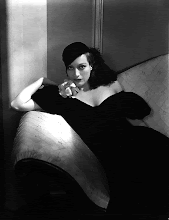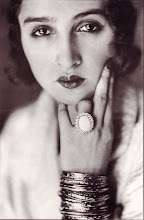
Katherine Hepburn
Ernest Bachrach was one of the most influential and admired of all the Hollywood portrait photographers. He headed the photographic department at RKO from its inception in 1929 until his retirement in the late 1950’s.
While there he controlled every aspect of the department, from publicity and advertising to hiring and training upcoming still and portrait photographers like Alex Kahle, Gaston Longet, and Robert Coburn as his assistants.

Ava Gardner
He also shot and custom printed most of the portraits of the stars employed by RKO during these decades, among them Dolores Del Rio, Fred Astaire, and Katharine Hepburn.

Fred Astaire
Bachrach was also a frequent contributor to American Cinematographer and International Photographer.

Carole Lombard
For Gloria Swanson, who had been photographed by everybody, “there was no other photographer in the world,” recalled Bob Coburn. She first met Bachrach after having left Hollywood for Paramount’s Astoria studio in New York in 1923, and he became the still photographer on the films she made there. When Swanson formed her own company in 1926 and moved back to Hollywood, Bachrach went with her and shot the stills and the portraits for those films, among them Sadie Thompson and Queen Kelly (both 1928) and The Trespasser (1929).

Gloria Swanson
Bachrach explains that, as a rule, it is advantageous to know his sitters relatively well. Like a director, he plays upon their emotions and induces the mood and expressions he desires.

Rita Hayworth
Perhaps the most difficult subject of great photography is the person who is recognized and admired for his or her perfect beauty. There exist many photographs of classically beautiful women – such as Hedy Lamarr and Dolores Del Rio – whose flawless skin and perfectly balanced features left not only their generation but also their photographers speechless.

Mary Astor
The way to photograph them was to keep the face expressionless; animating the face distorted the perfection. Dolores Del Rio quickly became reduced to the clothes she wore and the sets she decorated, like any other extraordinary but inanimate object. Her career in America was restricted because of her kind of beauty. How rare, then, to find portraits like the ones Bachrach took of her in the years she worked at RKO. These photographs convey a near-mystical quality and reveal a glimpse into a quiet but decisive Latin temperament.

Dolores Del Rio
In Bachrach’s words: “Portraiture is very closely akin to cinematography. The cinematographer has very little need for accessories in the making of close-ups; all he needs is a face and some lights and shadows. And that is all the portrait artist needs. Occasionally – but only occasionally – minor props are useful.”

Ava Gardner
He also shot and custom printed most of the portraits of the stars employed by RKO during these decades, among them Dolores Del Rio, Fred Astaire, and Katharine Hepburn.

Fred Astaire
Bachrach was also a frequent contributor to American Cinematographer and International Photographer.

Carole Lombard
For Gloria Swanson, who had been photographed by everybody, “there was no other photographer in the world,” recalled Bob Coburn. She first met Bachrach after having left Hollywood for Paramount’s Astoria studio in New York in 1923, and he became the still photographer on the films she made there. When Swanson formed her own company in 1926 and moved back to Hollywood, Bachrach went with her and shot the stills and the portraits for those films, among them Sadie Thompson and Queen Kelly (both 1928) and The Trespasser (1929).

Gloria Swanson
Bachrach explains that, as a rule, it is advantageous to know his sitters relatively well. Like a director, he plays upon their emotions and induces the mood and expressions he desires.

Rita Hayworth
Perhaps the most difficult subject of great photography is the person who is recognized and admired for his or her perfect beauty. There exist many photographs of classically beautiful women – such as Hedy Lamarr and Dolores Del Rio – whose flawless skin and perfectly balanced features left not only their generation but also their photographers speechless.

Mary Astor
The way to photograph them was to keep the face expressionless; animating the face distorted the perfection. Dolores Del Rio quickly became reduced to the clothes she wore and the sets she decorated, like any other extraordinary but inanimate object. Her career in America was restricted because of her kind of beauty. How rare, then, to find portraits like the ones Bachrach took of her in the years she worked at RKO. These photographs convey a near-mystical quality and reveal a glimpse into a quiet but decisive Latin temperament.

Dolores Del Rio
In Bachrach’s words: “Portraiture is very closely akin to cinematography. The cinematographer has very little need for accessories in the making of close-ups; all he needs is a face and some lights and shadows. And that is all the portrait artist needs. Occasionally – but only occasionally – minor props are useful.”













No comments:
Post a Comment